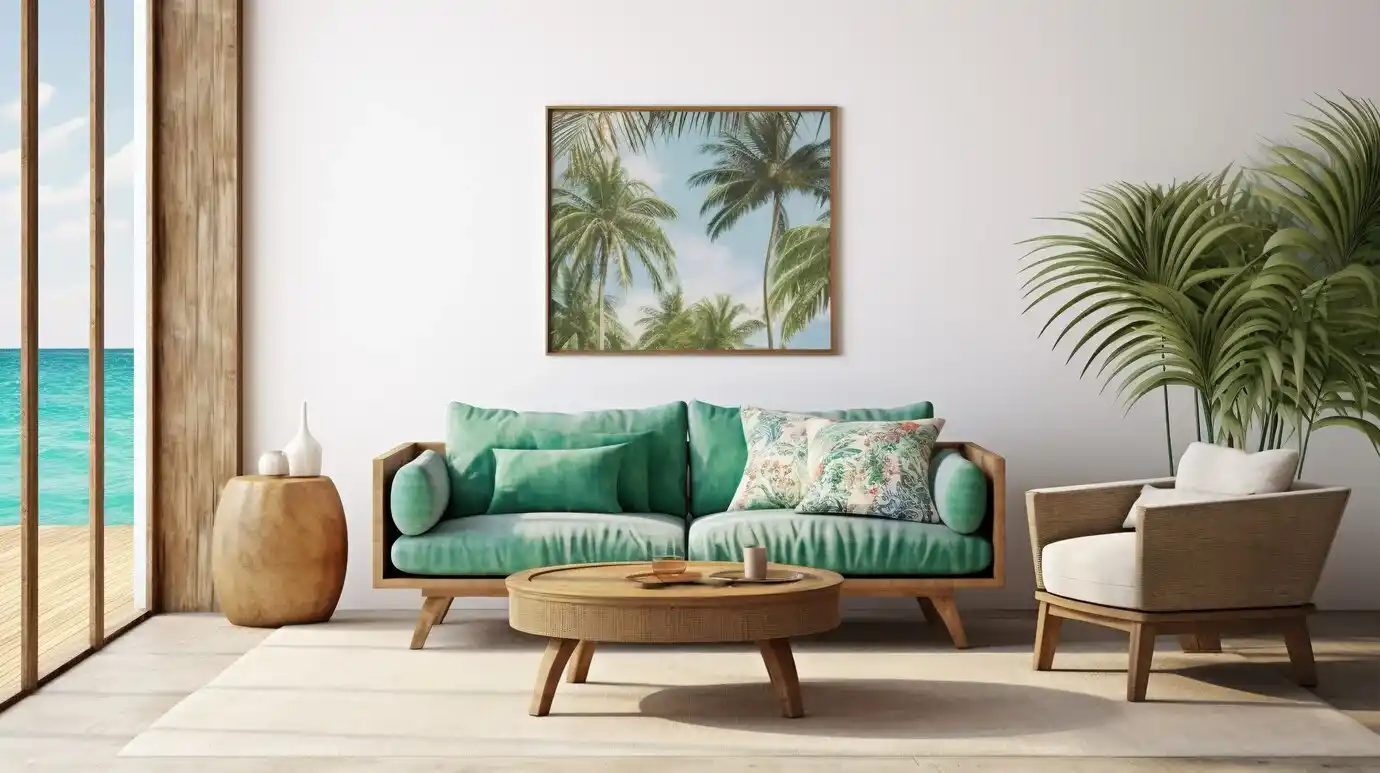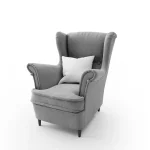Furniture is more than just functional objects in our homes. It is a reflection of our lifestyles, values, and histories. From the simple stools of ancient times to the sleek modern designs of today, furniture has evolved to meet our changing needs and tastes. Let’s explore the fascinating journey of furniture through history and its role in shaping the home environment.
Ancient Beginnings: Practicality and Mobility
In ancient times, furniture was minimal and designed for practicality. Nomadic lifestyles required pieces that were easy to move and multifunctional. Simple stools, benches, and chests were common, serving as both seating and storage.
Clifford Ackley, Curator of Decorative Arts at the Metropolitan Museum of Art, notes, “Early furniture was often multifunctional and designed to be easily moved. This reflects the nomadic lifestyles of early civilizations and the need for adaptability.” (Source: Lecture by Clifford Ackley at the Metropolitan Museum of Art)
Medieval Era: Sturdy and Symbolic
During the medieval period, furniture became more substantial and symbolic. Large wooden tables and chairs, often ornately carved, were symbols of wealth and status. These pieces were not only functional but also conveyed the power and prestige of their owners.
William Leach, an anthropologist and author, explains, “The arrangement of furniture within a home reveals a lot about social hierarchies and family dynamics. The placement of chairs and seating areas can indicate who holds power and who is considered an honored guest.” (Source: William Leach’s book “Land of Desire: Merchants, Power, and the Rise of a New American Culture”)
Renaissance and Baroque: Artistic Expressions
The Renaissance and Baroque periods saw furniture transform into true works of art. Intricate designs, luxurious materials, and elaborate craftsmanship became hallmarks of the era. Furniture was no longer just practical; it was a statement of artistic and cultural sophistication.
John Galliano, a fashion designer and cultural influencer, states, “Furniture design can be seen as a form of art. The styles and materials used throughout history showcase the artistic talents of different periods and regions.” (Source: John Galliano interview discussing the influence of furniture on fashion)
Industrial Revolution: Mass Production and Accessibility
The Industrial Revolution brought significant changes to furniture making. Mass production techniques made furniture more accessible to the general public. Simple, functional designs replaced the ornate styles of the past, reflecting the new industrial age.
Alva Macgilvray, a furniture historian, remarks, “Furniture is more than just functional objects; it reflects the social and cultural values of different eras. By studying the evolution of furniture, we gain a deeper understanding of how people lived and interacted within their homes.” (Source: Interview with Alva Macgilvray, furniture historian)
Modern Era: Innovation and Individuality
In the modern era, furniture design has embraced innovation and individuality. From minimalist Scandinavian designs to bold, eclectic styles, furniture today reflects our diverse tastes and lifestyles. Technology and sustainability have become key considerations in contemporary furniture design.
Tom Dixon, an industrial designer and visionary, highlights, “Furniture is constantly evolving to meet the changing needs of society. Modern furniture embraces technology and sustainability, reflecting our fast-paced lifestyle and growing environmental awareness.” (Source: Interview with Tom Dixon discussing the future of furniture design)
The Role of Furniture in Creating a Home
Furniture plays a crucial role in creating a home environment. It provides comfort, functionality, and a sense of identity. Marie Kondo, organizing consultant and author, emphasizes, “Furniture should spark joy and create a sense of comfort in your home. By selecting pieces that resonate with you and reflect your personality, you create a more inviting and functional living space.” (Source: Marie Kondo’s book “The Life-Changing Magic of Tidying Up”)
Studies Supporting the Importance of Furniture in the Home
The impact of furniture on our lives is supported by various studies and research. The American Psychological Association (APA) explores the link between home environment and mental well-being. According to the APA, a well-organized and aesthetically pleasing home can reduce stress and improve overall mental health. (Source: APA study on the connection between home environment and mental health)
Similarly, the National Endowment for the Arts (NEA) highlights the social and economic benefits of the arts. Their research shows that aesthetics and design significantly contribute to our quality of life. (Source: NEA’s research on the social and economic benefits of the arts)
Choosing Furniture: Practical Tips and Insights
When choosing furniture for your home, consider the following practical tips and insights:
- Quality and Durability: Invest in high-quality pieces that will stand the test of time. Look for solid construction and durable materials.
- Functionality: Choose furniture that meets your needs. Multifunctional pieces, like a sofa bed or a storage ottoman, can save space and add versatility to your home.
- Comfort: Prioritize comfort, especially for pieces like sofas and chairs that you use daily. Test furniture in-store to ensure it provides the support and coziness you desire.
- Style and Aesthetics: Select pieces that reflect your style and complement your home’s decor. Don’t be afraid to mix and match styles to create a unique and inviting space.
- Sustainability: Consider the environmental impact of your furniture choices. Opt for pieces made from sustainable materials and those that can be recycled or repurposed.
Expert Tips
Here are some expert tips to guide you in your furniture choices:
- Joanna Gaines: “Small spaces call for smart solutions! Multi-tasking furniture allows you to maximize functionality without sacrificing style. Look for pieces that serve multiple purposes, like ottomans with storage or a coffee table that transforms into a dining table.” (Source: Interview with Joanna Gaines)
- Michel Boyd: “Sustainability starts with mindful consumption. Choosing multi-functional furniture allows you to do more with less. It reduces clutter, minimizes the need for additional pieces, and is a more eco-conscious approach to furnishing your home.” (Source: Michel Boyd’s website/blog)
- Peter Walsh: “Multi-tasking furniture is an organizational dream! Ottomans with hidden storage compartments or beds with built-in drawers can help keep your space tidy and clutter-free.” (Source: Interview with Peter Walsh)
- Emily Henderson: “Don’t underestimate the power of versatility! Opt for furniture that adapts to your needs. A stylish chaise lounge can be a cozy reading nook or an extra guest bed when needed.” (Source: Emily Henderson’s website)
- Hilary Rushford: “Multi-tasking furniture can be budget-friendly! Investing in a single piece that serves multiple purposes can save you money compared to buying separate items.” (Source: Hilary Rushford’s website/blog)
- Nate Berkus: “Think beyond the box! Don’t be afraid to get creative with furniture placement and usage. A vintage trunk can serve as a coffee table and storage chest, while a stylish folding screen can be used as a room divider or a space-saving headboard.” (Source: Interview with Nate Berkus)
Conclusion: The Timeless Role of Furniture
Furniture has played a timeless role in shaping our homes and our lives. From the simple, functional pieces of ancient times to the innovative, stylish designs of today, furniture continues to reflect our evolving needs, tastes, and values. By choosing pieces that combine quality, functionality, comfort, and style, we can create a home environment that is both inviting and meaningful.
As we look to the future, the role of furniture in our homes will continue to evolve, influenced by advancements in technology, sustainability, and design. Yet, at its core, furniture will always be more than just objects; it will remain a vital part of our personal and cultural identity.









